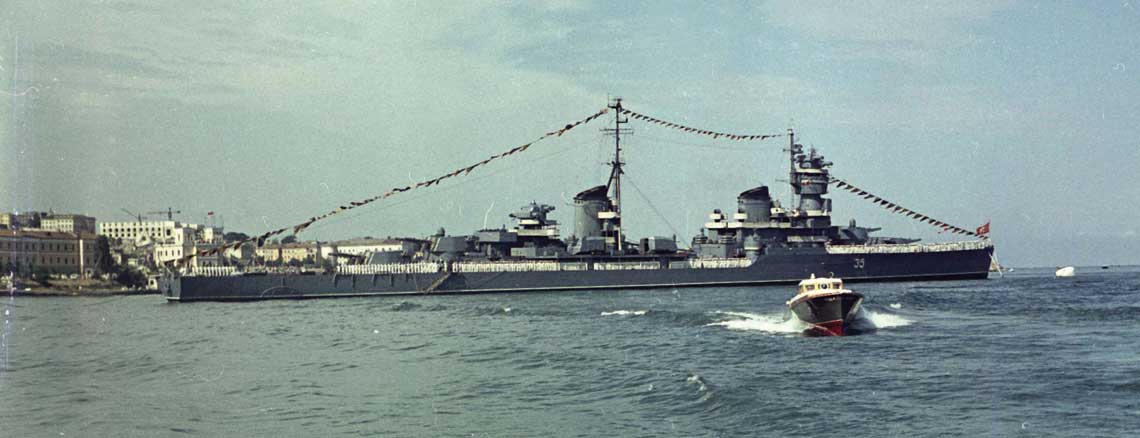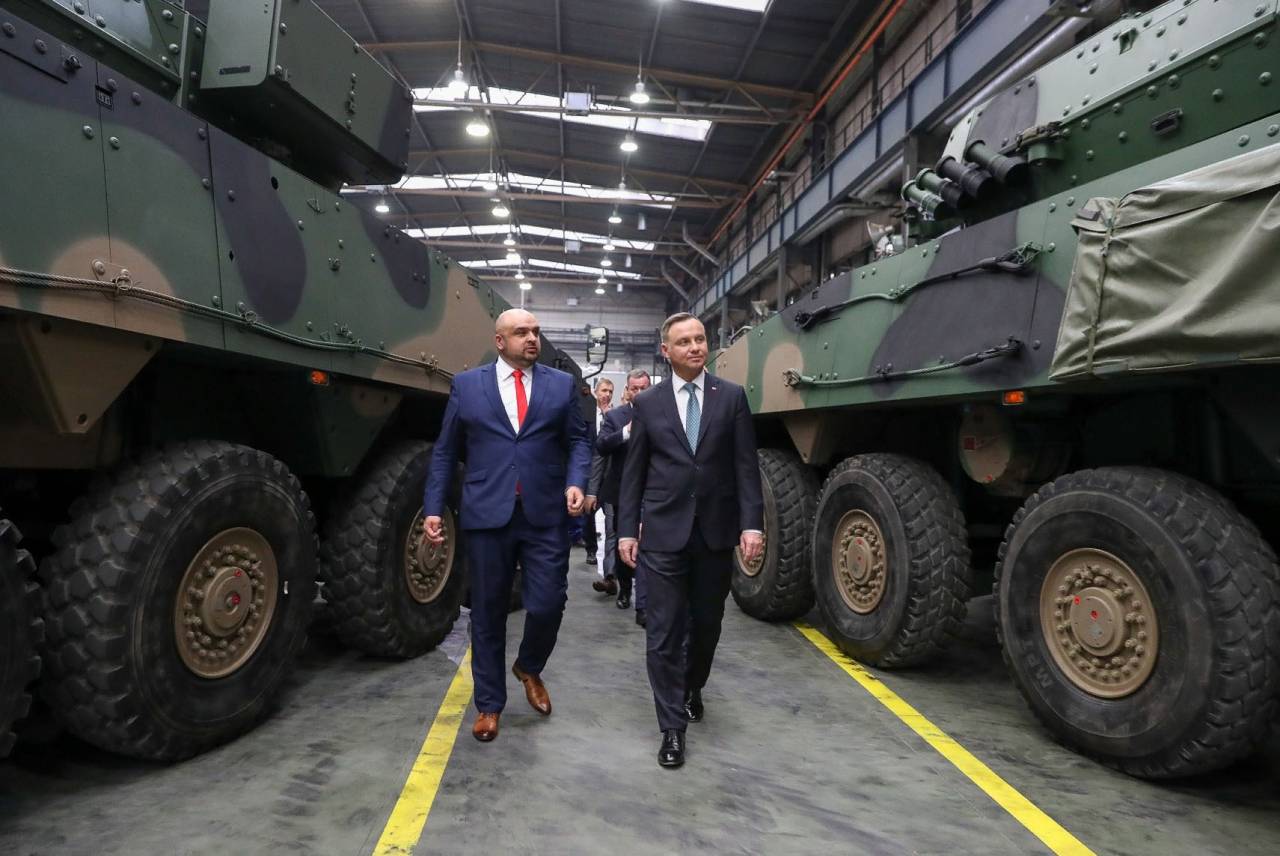
Project 68K cruisers part 2

Kuibyshev at the parade in Sevastopol in 1954. Project 68K cruisers had an elegant "Italian" silhouette. Photo collection by S. Balakina via the Author
Structure Description - Frame
Architecturally, the ships of project 68 - although completely of Soviet origin - have retained their "Italian roots": a bow deck with a length of more than 40% of the length of the hull, a three-tier bow tower superstructure (with a design borrowed from the project 26bis cruiser) with a fire control station at the top, two vertical chimneys with caps, 4 main artillery towers located in pairs in the bow and stern (upper ones in superposition), aft mast and aft superstructure with a second fire control post. There was no bow mast as such - it was replaced by an armored turret superstructure.
The ship had two solid and two partial (platform) decks, passing in the bow and stern, as well as in the side compartments. The double bottom was located along the entire length of the armored citadel (133 m). The hull is divided by 18 main transverse bulkheads into 19 watertight compartments. There were also 2 longitudinal bulkheads that continued the stringers and reached the lower deck. In the bow and stern parts, the piping system was transverse, and in the middle part - mixed.
During the construction, riveting technology was used (slopes, lining of the double bottom and decks within the citadel), and the rest of the hull structure was welded.
The main armor belt with a thickness of 100 mm (20 mm at the ends) and a height of 3300 mm was stretched between frames 38 and 213. It consisted of homogeneous ship armor plates and covered the sides from the lower deck upwards, reaching 1300 mm below the design waterline (KLV). The plates of the main belt and the armored transverse bulkheads covering the citadel (120 mm thick in the bow and 100 mm in the stern) were interconnected by rivets made of high-strength nickel steel. The thickness of the deck armor was 50 mm, the commander's tower - 150 mm. According to calculations, the armor had to protect the vital areas of the ships and withstand impacts. 152 mm anti-tank artillery shells fired from 67 to 120 cable and 203 mm from 114-130 cable.
The twin-shaft turbopair power plant had a total power of 126 hp. It consisted of 500 sets of steam turbines TV-2 with a gearbox and 7 main water-tube steam boilers KV-6 with increased productivity. The propellers were 68 three-bladed propellers with a constant pitch angle. Estimated maximum speed 2 knots, full fuel capacity (fuel oil, fuel oil) 34,5 tons.
- Weapon
Project 68 cruisers were to include:
- 12 38-mm L/152 B-58,6 guns in 4 triple-barreled MK-5 turrets,
- 8 anti-aircraft guns long-range caliber 100 mm L / 56 in 4 backup installations B-54,
- 12 guns of 37 mm L/68 caliber in 6 duplicating installations 66-K,
- 2 triple-tube 533 mm torpedo tubes
- 2 flying boats take off from one catapult,
- naval mines and depth charges.
The three-barrel turret MK-5 was semi-automatic and met the requirements of similar designs of that time. It was capable of hitting surface targets with 55 kg projectiles at a distance of up to 170 cables. The rate of fire was up to 7,5 rds / min. on the trunk, i.e. 22 per turret or 88 per broadside. Unlike the MK-3-180 turrets of the Project 26/26bis cruisers, the B-38 guns in the MK-5 turrets had the possibility of individual vertical guidance, which increased their survivability in battle. The technical design of the MK-5 tower was developed by the design bureau of the Leningrad Metal Plant. I. V. Stalin (chief designer A. A. Floriensky) in 1937-1938.
The fire control of the main artillery gun was divided into 2 independent PUS systems "Molniya-A" (originally designated "Motive-G") with 2 fire control posts KDP2-8-III (B-41-3) with two 8-meter stereoscopic rangefinders in everyone. The systems were developed by the office of the Leningrad plant "Elektropribor" (chief designer S. F. Farmakovskiy).
The MK-5 turrets were equipped with DM-8 82-meter rangefinders and machine guns. Rockets and propellant charges in asbestos cassettes were delivered from warehouses by separate lifts.
